新湖南客户端 2018-11-26 14:30:57
By Liao Huiwen, Zhou Yang 丨Hunan Today
新湖南客户端记者廖慧文 周杨

On November 1, 2017, Changsha, the capital of Hunan Province, was selected to join the UNESCO Creative Cities Network (UCCN).
2017年,长沙获选世界媒体艺术之都。
Changsha (media arts) was among 64 cities from 44 countries and regions which joined the network. WHY?
参选的城市上百个,为什么是长沙?
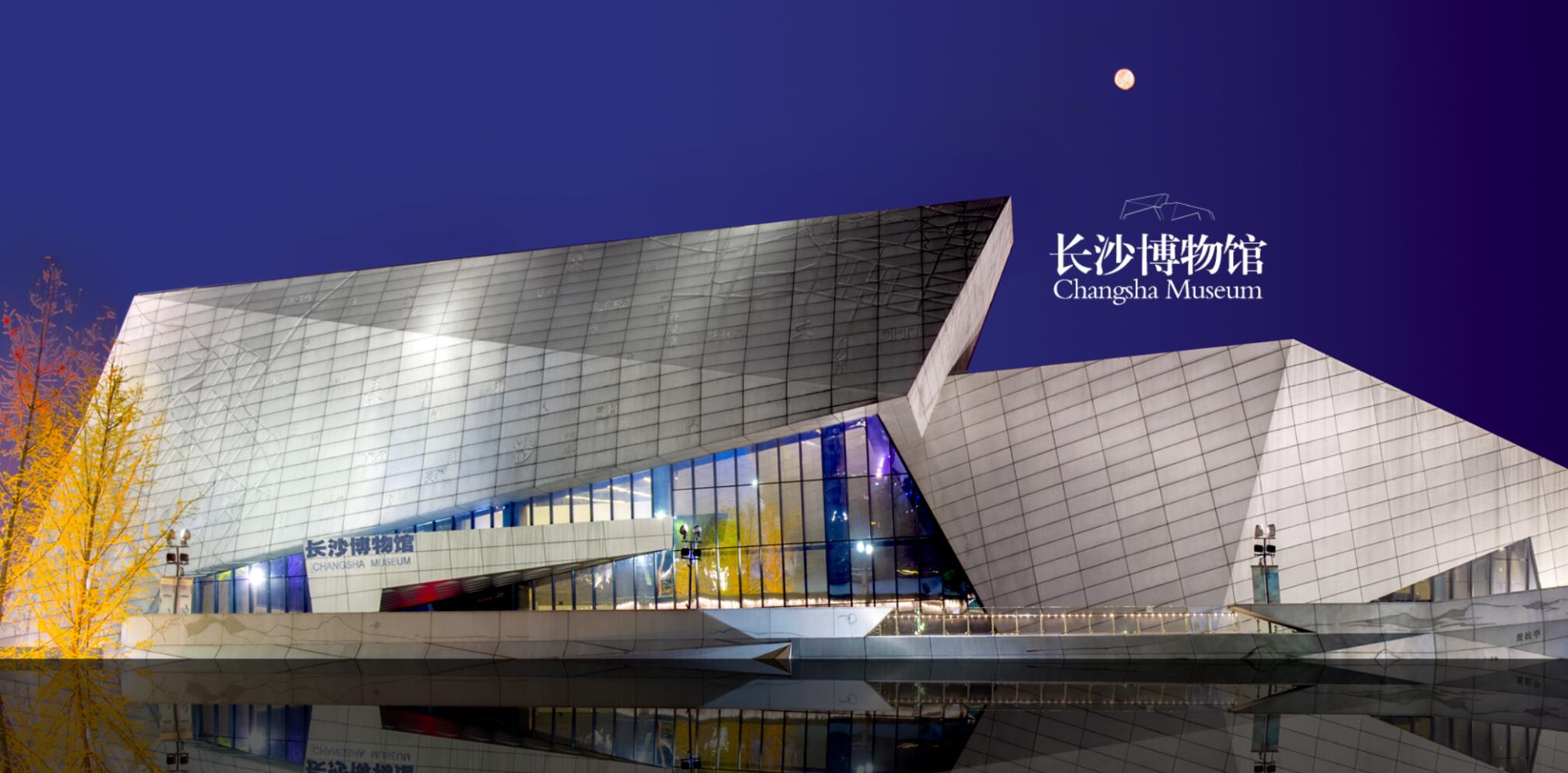
The answer to this question could be its long-standing history and glorious culture, which could be found in Changsha Museum.
长沙,湖南省省会,湘楚文化的发源地之一。源远流长的历史,独特的文化印记,崭新的文化风貌。这个问题的答案,你都能在这座博物馆里找到。
In 2015, with the opening of the new exhibition building, the number of foreign visitors to Changsha museum has increased greatly. So far, it has received nearly a hundred groups of foreign tourists, of which Japan and South Korea have the highest proportion.
2015年,长沙博物馆新馆开馆,长博接待外籍游客的数量大大增加。迄今为止,共接待了近百批外籍游客团队,其中日韩团队占比最高。
Today, let’s visit the exhibition, following the guidance of staff from the Foreign Cultural Exchange Department of Changsha Museum.
今天,长博对外文化交流部门的工作人员们就带我们一起看展。
(Translated by Zhouyang; Video by Li Zhenming)

(Click here to see five must-see items in Changsha Musuem)
Ge, You, Nao, Cong, Gui, Zhang... Do you know what are they? Many of these Chinese characters are very strange even to Chinese people. And it is difficult to pronounce these characters correctly. Guoyao’s job, as the English translator and tour guide of the museum, is to introduce the exhibition and cultural artifacts in English.
戈、卣、铙、琮、圭、璋...你知道是什么吗?这些字很多中国人都非常陌生,难以念出它们的正确读音。英文翻译、讲解员郭瑶的工作就是用英文将这些文物翻译并解释出来。
Nowadays, there are more and more foreign tourists understanding Chinese culture. Guo Yao said: "Some foreign tourists even ask very professional questions. They also have a certain understanding of the Chinese dynasty."
现在,了解中国文化的外籍游客越来越多了,郭瑶表示:“还有不少外籍游客会问一些很专业的问题。对中国的朝代也都有一定了解。”
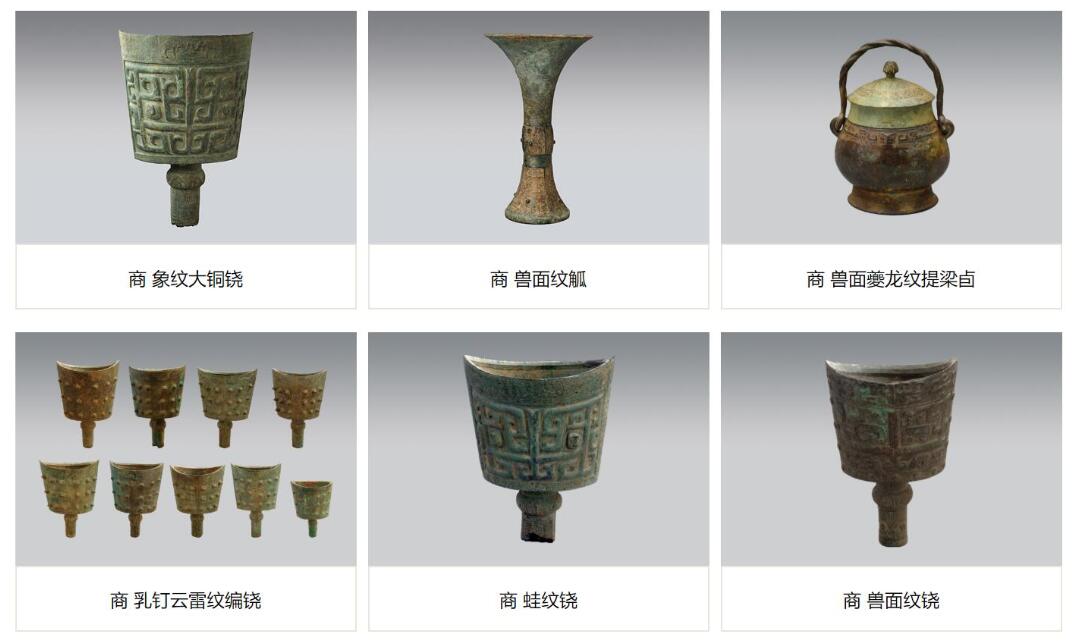
(Source: www.csm.hn.cn)
For foreign tourists, the most interesting boutique collections are the bronzes excavated in Changsha.
对于外籍游客来说,最让他们感兴趣的文物莫过于长沙出土的青铜器。
“In Europe and Central Asia, there were also items excavated from the Bronze Age.” The bronzes made in Europe are mostly practical objects with smaller shapes. The pattern is mainly based on geometric patterns and production and life scenes. Chinese bronze wares are the most eye-catching rituals. They were generally found alone, either on a mountain or beside a river, thus probably related to sacrifice to the mountain or river.
“在欧洲和中亚地区,也有青铜时代。”欧洲的青铜器多是实用器物,器型较小。花纹以几何纹、生产生活场景为主。中国青铜器却是以祭祀的礼器最为引人注目。这些青铜器大多单件出土,或埋于山上,或出于水边,其用途可能与祭祀山川有关。
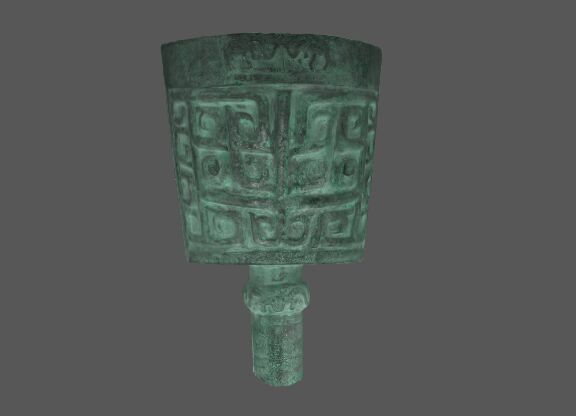
(Bronze Nao with elephant pattern 象纹大铜铙)
"For foreign tourists, it is shocking to see such a large bronze." Guo Yao said.
“对于外籍游客来说,看到这么大的青铜器是很震撼的。”郭瑶说。
The bronzes excavated in Changsha are often decorated with patterns of animals and flowers, full of fantasy imagination and romance.
在长沙出土的青铜器上,常常还装饰着各种动物、花草的图案,充满奇幻的想象,极具浪漫色彩。
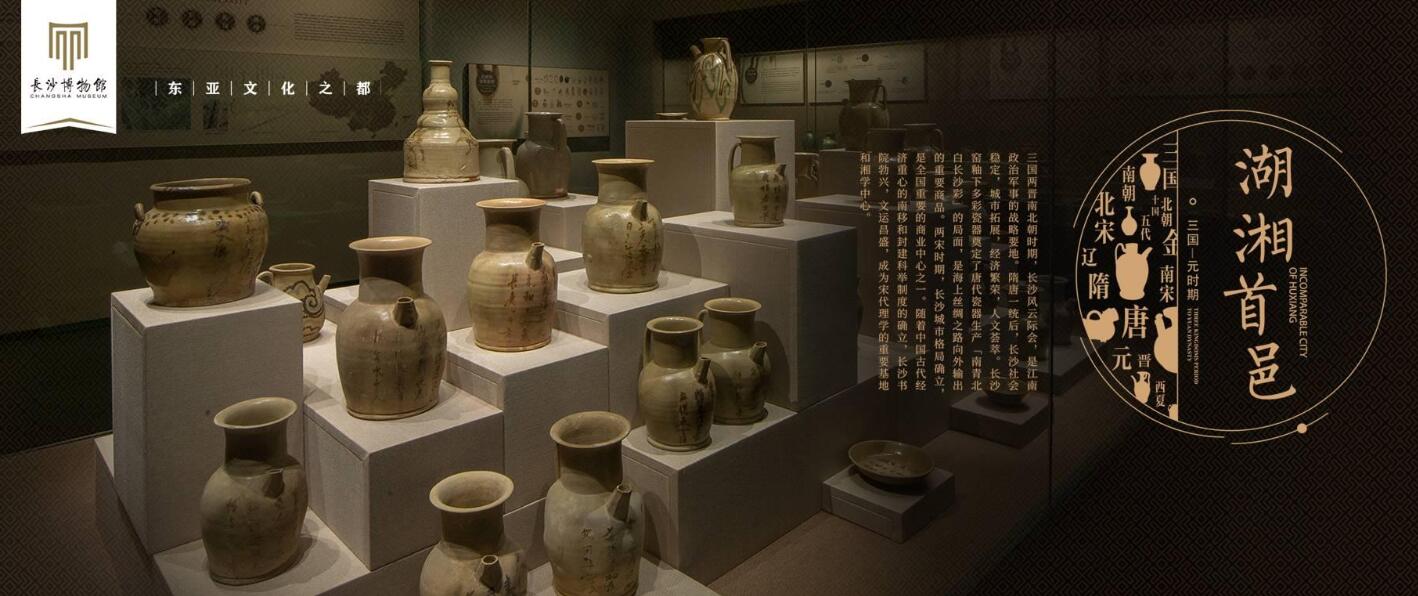
Changsha Kiln, also known as Changsha Tongguan Kiln, is located in Wazhaping, Tongguan Town, east bank of the Xiang River, Wangcheng District, Changsha. It emerged in the middle and late 8th century after the An-shi Rebellion, reached its peak in the middle and late Tang Dynasty, and declined in the Five Dynasties. Changsha Kiln was used in almost every aspect of social life back then. It also pioneered overseas market actively and sold its products both home and abroad. Changsha Kiln was a bright pearl shinning on the Maritime Silk Road in the Tang Dynasty.
曾行销世界的长沙窑,则更能引发文化共鸣。长沙窑大致兴起于“安史之乱”以后,至中晚唐发展到鼎盛时期,衰败于五代。长沙窑既烧制当地人们普遍使用的日常用瓷,又积极开拓海外市场,是唐代海上丝绸之路上的璀璨明珠。
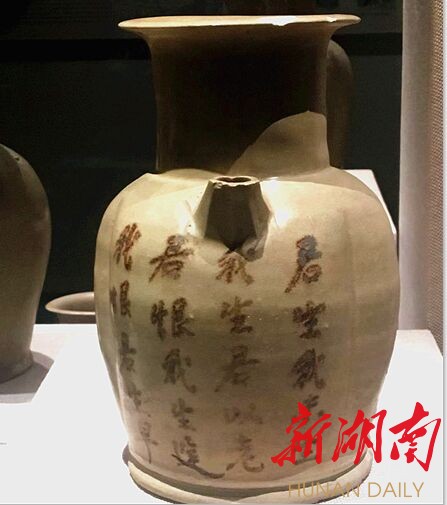
(“网红”长沙窑青釉“君生我未生”瓷瓶,它的“英文名”叫Celadon glazed porcelain pot with a love poem.)
China is the hometown of porcelain, and porcelain varies from place to place. The decoration of Changsha Kiln is unique. Kiln workers wrote poems that were popular at the time or those poems they created on the porcelain. It is these poems that express the thoughts of people a thousand years ago.
中国是瓷器之乡,不同产地的瓷器各有差异。长沙窑的文字装饰独具特色。窑工们将当时流行的诗歌或是自己创作的诗歌用毛笔写在瓷器上。展现了一千多年前的人们的所思所想。
It takes a lot of effort to translate these poems. "In order to be more elegant and accurate, we will refer to the translation of some famous scholars. But when we are introducing these items to visitors, we also need to be more straightforward."
翻译这些诗歌也颇费功夫。“我们会参考一些名家的译法,要文雅,也要做到浅白和口语化
(长沙窑“鸟飞平无远近”瓷盘,上面的诗歌“鸟飞平无远近,人随流水东西。白云千里万里,明月前溪后溪。”)
Apart from these cultural collections, Changsha Museum also has an area for tourists to interact. You can press the Wangdang pattern on the red paper using the machine. After that, the red paper could be reserved by yourself.
除了这些“好看”的,长博还有互动区。红色的纸片,经过轻轻一压,汉代的瓦当图案就印上去了。还可以留作纪念。

More than a thousand years ago, the game, “throwing arrow in the pot”, was popular among the superior class in China. The rule is to throw the arrow into the pot and vote for more. Losers need to drink wine. At Changsha museum, you can experience this game in a whole new way. If you want to win, you need to practice and have good luck.
一千多年前,中国士大夫阶层盛行“投壶”游戏。规则是把箭向壶里投,投中多的为胜,负者照规定的杯数喝酒。在这里,你可以用全新的方式体验。但是要射中,需要一点小技巧和运气。
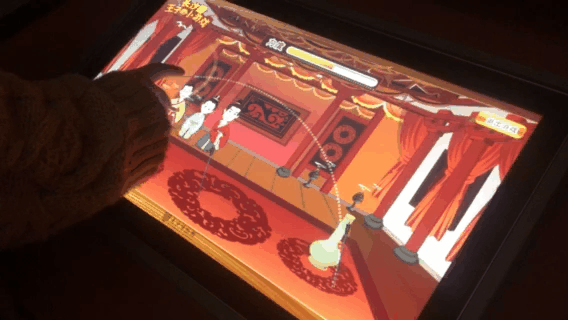
At present, Changsha museum is trying their best to enable tourists to experience the history and to enjoy visiting the museum. As a result, more and more tourists from different cultural backgrounds have a better understanding of the history and culture of Changsha.
目前,长博正在尝试用更多的方式让人们感受历史,爱上博物馆。越来越多的不同文化背景的游客正在成为长沙历史文化的知音。
Translated by Zhou Yang
Revised by Mengyao
责编:周杨
来源:新湖南客户端
我要问



 下载APP
下载APP 报料
报料 关于
关于
 湘公网安备 43010502000374号
湘公网安备 43010502000374号